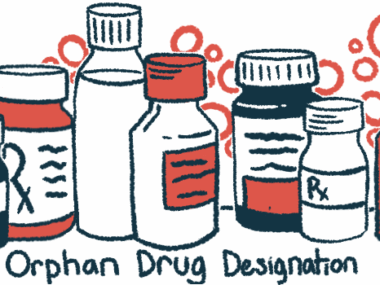Chimerix asks FDA to approve oral dordaviprone as glioma treatment
Therapy designed for patients whose tumors carry H3 K27M mutation
Written by |

Chimerix has submitted an application asking the U.S. Food and Drug Administration (FDA) to approve its oral therapy dordaviprone as a treatment for recurrent glioma in patients whose tumor carries a specific mutation called H3 K27M.
“This NDA [new drug application] submission marks a pivotal moment for Chimerix in our mission to bring this potentially life-altering drug to patients diagnosed with recurrent H3 K27M-mutant diffuse glioma,” Mike Andriole, CEO of Chimerix, said in a company press release.
The company is asking the FDA to consider the application under the accelerated approval pathway, which shortens the review time to six months from the usual 10. If the regulatory agency agrees to review the application under accelerated approval, a decision would be expected sometime in the third quarter of this year, or by the end of September.
According to Andriole, Chimerix is “preparing for potential commercial launch in the U.S.” in 2025.
Chimerix secures $30M financing ahead of FDA decision on glioma treatment
Chimerix is already taking steps to get ready for potential approval, including securing up to $30 million in financing from Silicon Valley Bank, a division of First-Citizens Bank, to support commercial launch.
“To maximize availability and access of dordaviprone at launch, we have enhanced our commercial capabilities across multiple functions including market access, distribution, reimbursement, patient services, marketing and commercial operations, all supported by a robust manufacturing and quality management system,” Andriole said.
Michelle LaSpaluto, chief financial officer of Chimerix, said the agreement with Silicon Valley Bank will provide “access to additional capital during this upcoming investment cycle.”
The goal, LaSpaluto said, is “helping ensure dordaviprone availability to as many patients as possible, as quickly as possible, if approved.”
H3 K27M is a mutation that affects a histone protein. Histones are a vital part of the packaging for a cell’s DNA — normally, a strand of DNA wraps around histone proteins, sort of like thread around a spool. By regulating how tightly the DNA is wrapped around the histones, cells can modulate the activity of genes in the DNA.
The H3 K27M mutation causes this regulatory process to go awry, however, and as a result, many genes become abnormally active. This can lead to the out-of-control growth of certain brain cells that ultimately gives rise to glioma.
Gliomas that carry the H3 K27M mutation tend to have a less favorable prognosis than that of gliomas without this mutation, according to Chimerix.
[Chimerix’s goal:] Helping ensure dordaviprone availability to as many patients as possible, as quickly as possible, if approved.
Dordaviprone, also known as ONC201, is designed to target two proteins involved in the growth of some cancer cells. One, called DRD2, is a receptor protein that helps cells respond to a signaling molecule called dopamine. The other, ClpP, is involved in the activity of energy-generating cellular structures called mitochondria.
Chimerix’s application seeking FDA approval of the therapy is based mainly on data from a Phase 2 study (NCT02525692) that tested dordaviprone in people with H3 K27M-mutant diffuse glioma — meaning the cancer had spread into the surrounding healthy brain tissue — and other types of brain cancer.
In patients with recurrent H3 K27M-mutant glioma, the results showed an overall response rate of 28%. In other words, more than 1 in 4 patients experienced a reduction in tumor growth with dordaviprone. Most patients who responded did so within five months of treatment, and the median duration of response was 10.4 months. The most common side effect of dordaviprone was fatigue.
An ongoing Phase 3 clinical trial called ACTION (NCT05580562) is testing dordaviprone in patients with newly diagnosed H3 K27M-mutant glioma who have undergone first-line radiation therapy. The hope is that the experimental treatment will prove to be better than a placebo at preventing cancer progression and extending survival, according to the company.
The study, which aims to enroll approximately 450 patients, is recruiting participants at more than 150 sites in North America, Europe, Asia, and Australia.
Separately, Chimerix is also running an expanded access program (NCT04617002) to provide dordaviprone to patients with H3 K27M-mutant gliomas who cannot access the therapy through clinical trials. This program is available at 25 sites in the U.S., including a study center in Hawaii.







